Grytviken Cemetery- Site of Ernest Shackleton’s Grave
Purchases made through links earn us a small commission, at no extra cost to you.
South Georgia Island, in the South Atlantic Ocean, is a port of call on some cruises to Antarctica. The ships all stop at Grytviken, giving passengers the opportunity to explore the ruins of a historic whaling station and visit the graves of renowned polar explorers in the Grytviken Cemetery.
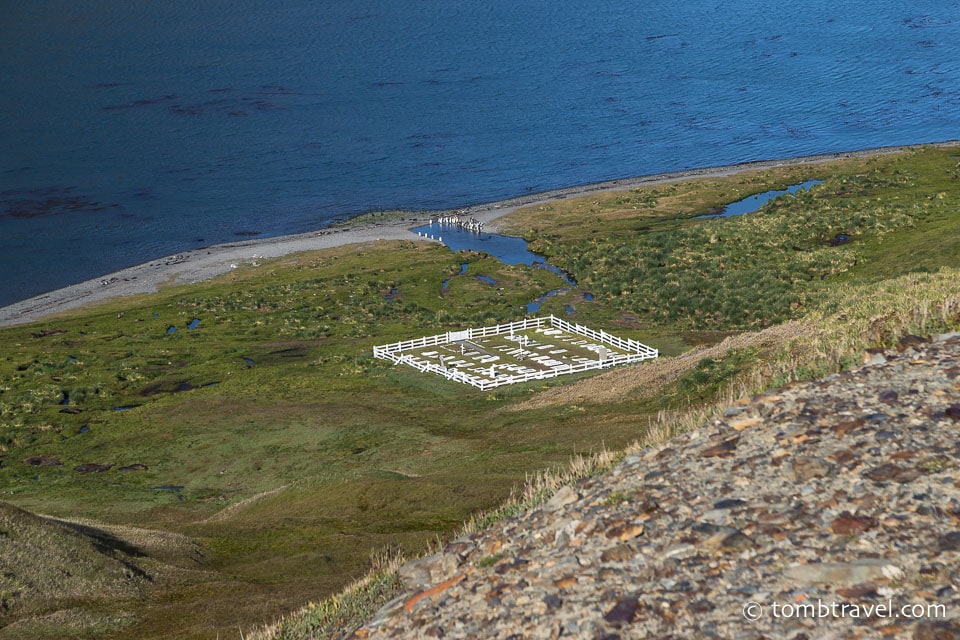
In This Post
History of the Grytviken Cemetery
From the European discovery of South Georgia Island in 1675 to the founding of Grytviken as a commercial whaling station in 1904, there have always been plenty of hazards claiming the lives of people who lived, worked, and explored here.
Lives were lost due to stormy seas, shipwrecks, disease, and on the job accidents hunting seals and whales. In need of a burial place, the Grytviken Cemetery was created a short walk away from the whaling station.
In the 19th century the cemetery was used as a burial place for sealers and in the 20th century it became the whalers’ cemetery. Sixty four people are now buried in the Grytviken Cemetery, with the earliest grave dating back to 1838.
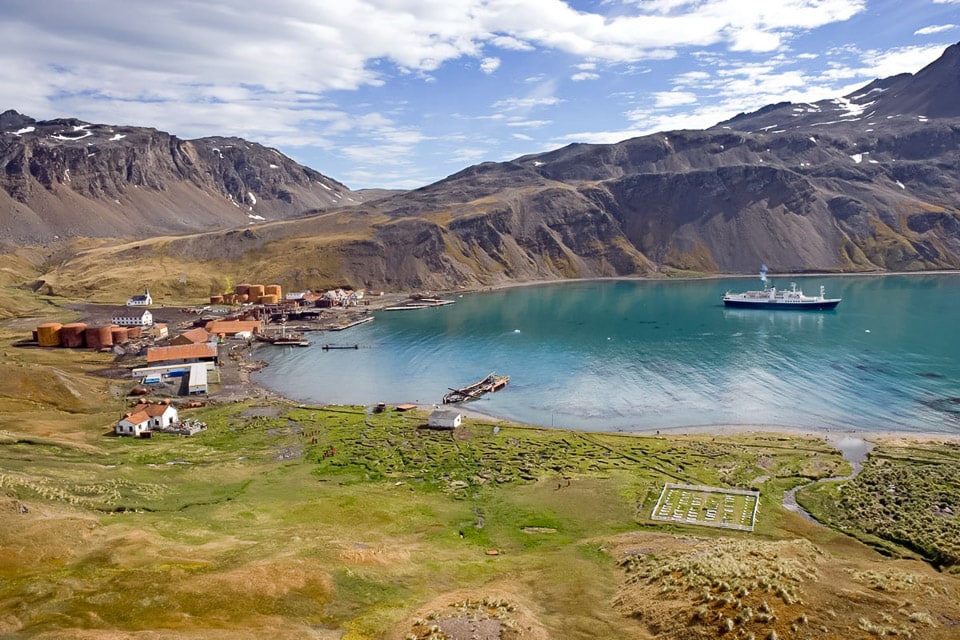
Grytviken Cemetery Burials- Notable Graves in the Grytviken Cemetery
The Grytviken Cemetery is the final resting place of sealers, whalers, a submarine officer, and two polar explorers. Nine victims of Grytviken’s 1912 typhoid epidemic are also buried in the cemetery. Here are some prominent people buried in Grytviken.
Sir Ernest Shackleton (1874-1922)
Shackleton was an Anglo-Irish explorer who led three British expeditions to Antarctica during a period known as the Heroic Age of Antarctic Exploration.
He led the British Antarctic Expedition on Nimrod, then the Imperial Trans-Antarctic Expedition on Endurance (during which he made a heroic rescue of his crew after their ship sank), and lastly the Shackleton-Rowett Expedition on Quest. The day after Quest arrived at South Georgia Island Shackleton died of a heart attack.
Frank Wild (1873-1939)
Wild was a British explorer who participated in five Antarctic expeditions. He was Shackleton’s second in command during the famous Imperial Trans-Antarctic Expedition when Endurance was crushed by ice in the Weddell Sea. Wild spent 4 months on Elephant Island with a crew of 21 men awaiting rescue after Shackleton set off to South Georgia Island for help. Remarkably, everyone survived.
Wild’s ashes were interred on the right-hand side of Shackleton’s grave site in 2011. The granite block marking his resting place reads “Frank Wild 1873-1939, Shackleton’s right-hand man.”
William Barlas (1888-1941)
Barlas was magistrate at South Georgia Island from 1928 until his death in 1941 when he was killed by an avalanche that pushed him into the sea. His grave is marked with a granite Celtic cross.
Crew members of Esther
In 1846 Esther was one of the earliest recorded vessels to visit South Georgia Island. Several crew members who reportedly died of typhus are buried in the Grytviken Cemetery. Wooden grave markers indicate their burial places.
Felix Artuso (1945-1982)
Artuso was an Argentine submarine officer who was killed during the Falklands War. He was a Prisoner of War when mistakenly shot by a British soldier who thought he was attempting to sabotage the Santa Fe submarine. Artuso’s grave is marked with a white cross bearing his name.
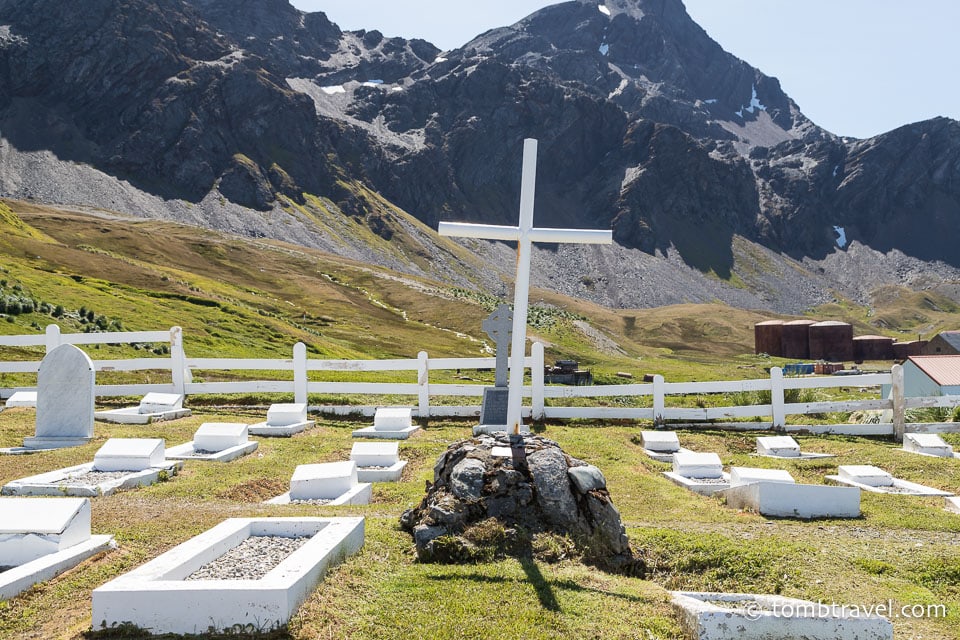
Ernest Shackleton’s Grave
The most famous grave in the Grytviken Cemetery is that of Sir Ernest Shackleton.
Shackleton’s burial site on South Georgia Island was chosen by his widow. After a funeral in the Whalers’ Church, Shackleton was laid to rest in the Grytviken Cemetery on March 5, 1922.
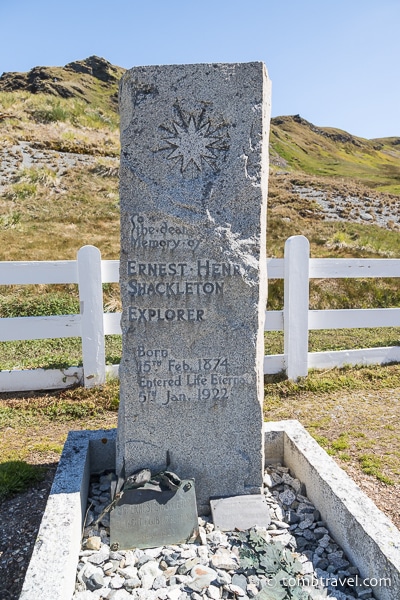
Shackleton’s grave has a large granite headstone inscribed with a nine-pointed star. On the back is the Robert Browning quote, “I hold that a man should strive to the uttermost for his life’s set prize.” Unlike other graves in Grytviken Cemetery, Shackleton’s headstone faces south towards Antarctica instead of east.
Final Words
The cemetery at Grytviken is a modest resting place, with plain white graves and not much funerary art. However, its location looking out onto the isolated, mountain-framed King Edward Cove is a stunning scene fit for an adventurer.
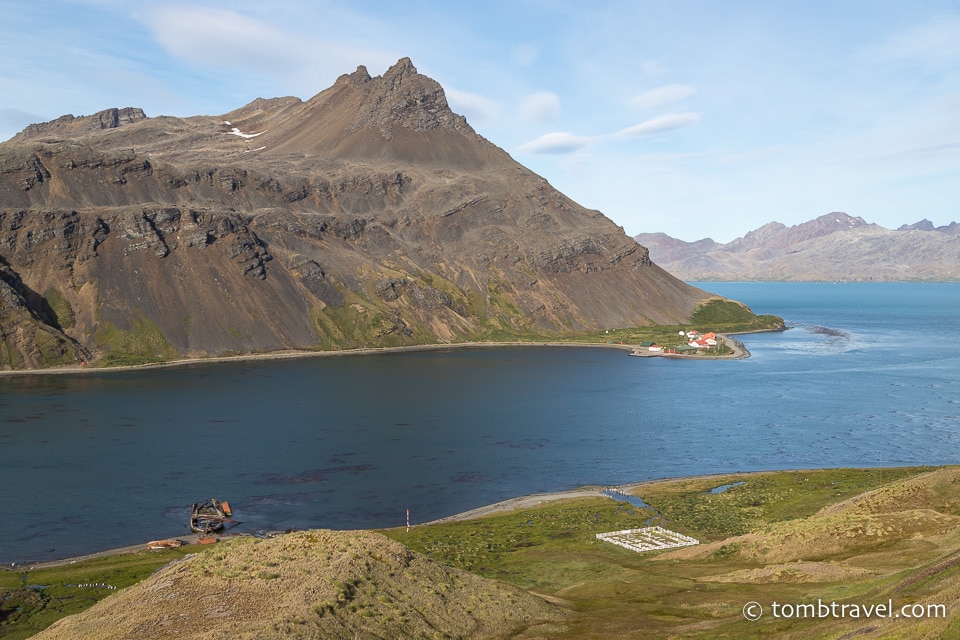
The Grytviken Cemetery is not easy to visit, as South Georgia Island is so remote and can only be reached by boat. If you’re lucky enough to make the journey, the Grytviken Cemetery and Ernest Shackleton’s grave is sure to be a highlight of your trip to this historic whaling station.
More Burial Places in the U.K. and Overseas Territories
- The Magnificent Seven Cemeteries- Victorian Cemeteries in London
- Highgate Cemetery Burials- Famous Graves in Highgate Cemetery
- Westminster Abbey Royal Tombs- The Royals and Monarchs Buried in Westminster Abbey
- Famous People Buried in Westminster Abbey- The Legendary Burials at Westminster Abbey
- Shakespeare’s Grave and Funerary Monument- Discover Shakespeare’s Burial Place in Stratford-upon-Avon
